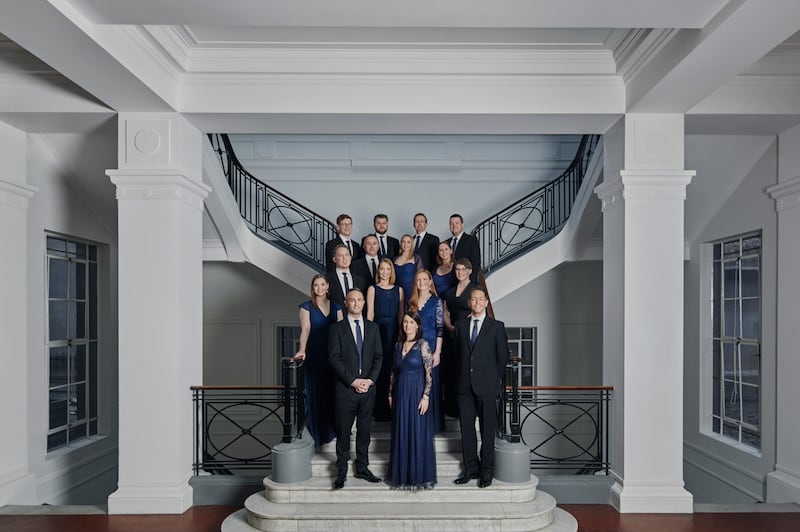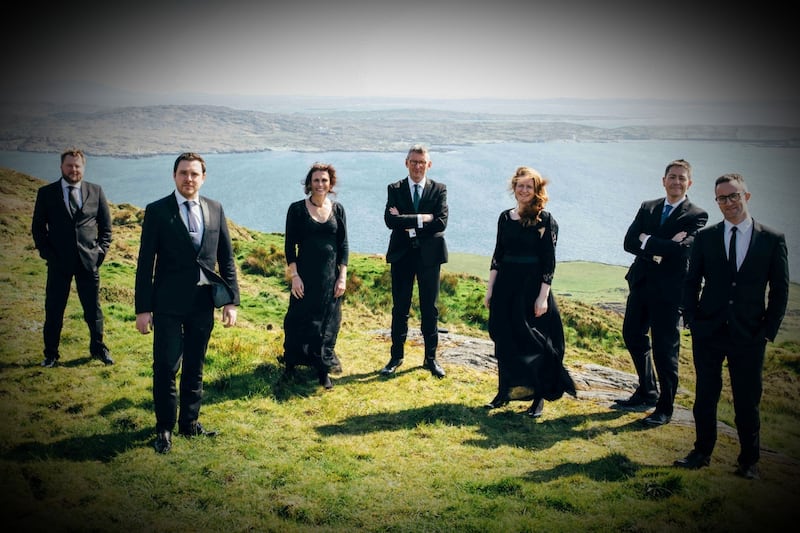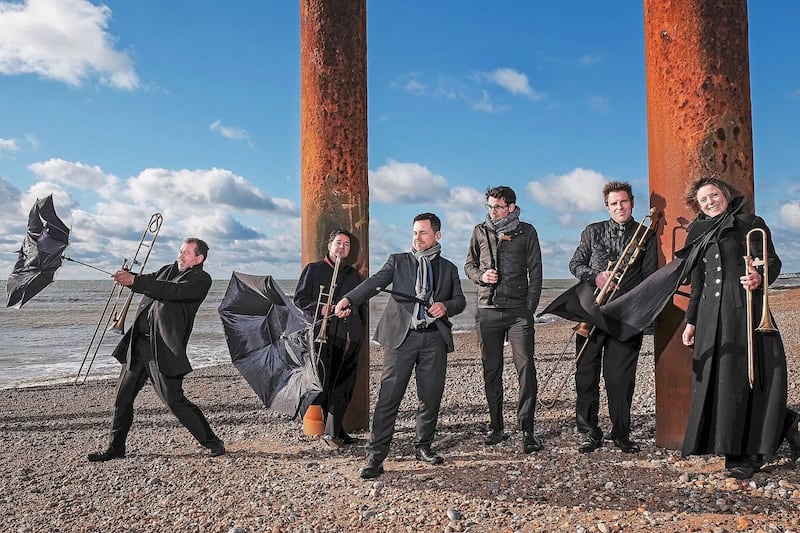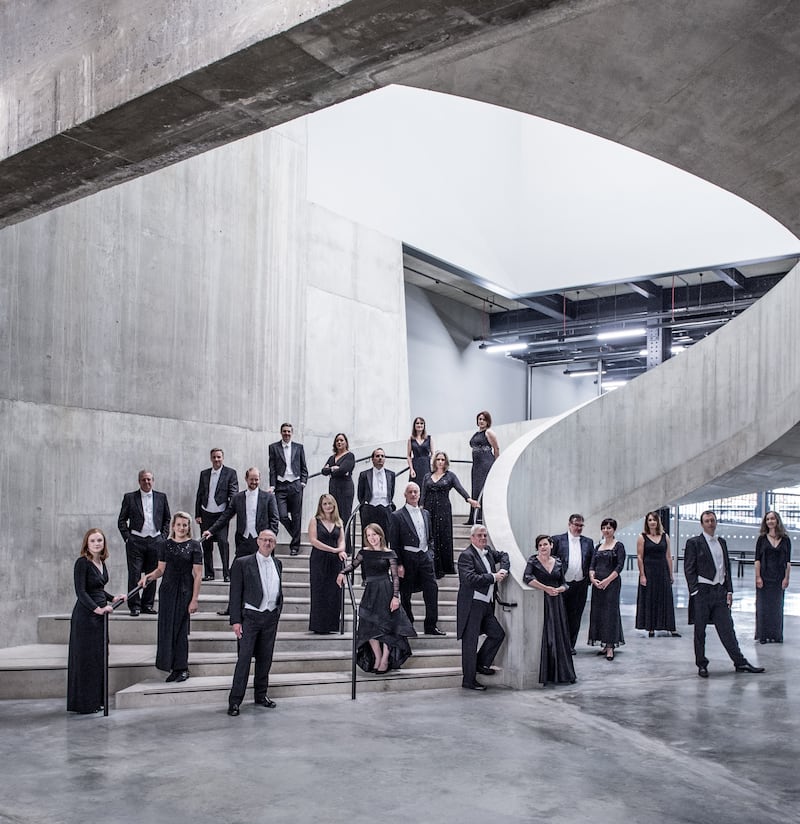The singer and composer Eoghan Desmond has a premiere coming up in a concert by Chamber Choir Ireland and the Irish Chamber Orchestra, under Cormac McCarthy. At 45 minutes or so, it may well be the largest-scale setting of a text in Irish. Desmond describes himself as a lapsed Gaeilgeoir: he went to a school where he studied everything through Irish, but if you haven’t been using the language for 15 years or so, “the detail goes”.
The new piece, Amra Choluim Chille, is, he explains, “a setting of a sixth-century Irish elegy in praise of St Columba, for choir, strings, harp and percussion”. It has its origins in a commission from Christ Church in Dublin for a piece in Irish for St Columba’s Day, which falls on June 9th.
“It was,” Desmond says, “part of a series of commissions of Irish-language motets or anthems for use at choral evensong for all the major Irish saints. It so happened that I had just upgraded to my PhD in Aberdeen and was casting about for a subject or text for a large-scale piece. I was directed towards Amra Choluim Chille, which had recently been translated into modern Irish.”
The Christ Church commission was for a three-minute piece for choir and organ. It became the third movement of the longer work, and it was not just a starting point. He also used it to generate “a lot of the material for the rest of the piece”.
READ MORE

A bass-baritone who’s a member of Chamber Choir Ireland and is now based in London, making a living as a freelance singer through the city’s busy choral scene, Desmond is one of those creators who found composing during lockdown really difficult. “I wasn’t sure why. I finished my PhD in January 2020, submitted it on the 31st, took a month off and then, when lockdown happened, sat down at my desk and thought, ‘This is great: I’ll self-motivate about music for the first time in about 3½ years.’ I sat there every day for two weeks, and just nothing happened. I realised that I struggle to write in a vacuum. I’m always drawing inspiration from what I’m working on as a singer.”
Back in 2018, around the time he was finding the text, he explains that “Chamber Choir Ireland had recently recorded Tarik O’Regan’s cantata A Letter of Rights, which is for choir and about 12 strings and crotales” – crotales are small cymbals, very clear in pitch, and without the fizz of the more familiar large cymbals used in orchestras – “and we also did a performance of James MacMillan’s Stabat Mater at New Music Dublin – which, as you might remember, was postponed due to the big snow.
I knew I had to have crotales for my piece when I heard that. It’s just a really interesting, beautiful effect
“So those would be the two pieces that I think most influenced, certainly, the texture of the new piece. A Letter of Rights has all of these transitionary interludes of the strings with very prominent crotales parts. I knew I had to have crotales for my piece when I heard that. It’s just a really interesting, beautiful effect.”
Desmond is keenly aware of the challenges set by using a text in Irish. “I got some Arts Council funding during lockdown to prepare the vocal score, and I used a portion of that to commission a transliteration from Bríd Ní Ghruagáin,” someone he prizes because she is both a singer and a Gaeilgeoir.
Language is always an issue for singers. “If you’re saying a word, even in English, a word like ‘laid’ ... obviously, we know how to do that in English. But if I’m ever next to a non-English speaker and I have to sing the word ‘laid’, I spend ages having conversations about where exactly does that diphthong come, and if it’s on a long note, or it’s on a melisma, where exactly are we putting things.”

He draws a comparison with Chamber Choir Ireland’s next project. “It will be no more difficult for non-Irish speakers than the Old Church Slavonic of the Rachmaninov Vespers, in the sense that it’s not a widely spoken language. Probably almost no one in the choir will understand what the individual words actually mean, and it’s got a lot of sounds that we don’t usually make in English. That’s part of the singer’s job, to make it sound convincing.”
He has considered doing a version in English, which might help with future performances by other choirs. “There were moments when I thought about trying to come up with an alternative setting of the words in English. But I’m no poet, and I think the compromises I was coming up with were not very satisfying. A lot of the vocal lines are influenced by Irish traditional music. To come back to James MacMillan, the traditional Scottish inflection is there in all of his music, regardless of what language it’s in.”
There was really very little distinction drawn between what kinds of music we were listening to. We were as likely to listen to Crosby, Stills and Nash as to Handel on the drive to school
Amra Choluim Chille, he says, “has sections which are very overtly influenced by sean-nós singing. It was jarring to me to try to translate those into English. If somebody who’s got a great grasp of English and Irish, and a poetic grasp of English, came to me and said, ‘I’d love to translate this into English,’ I would say, ‘Go for it!’ It’s outside my skill set.”
Desmond says he decided that he wanted to be a composer as early as seven. He had a catholic musical background, was exposed to the Kodály and Suzuki methods as a child, played tin whistle and, later, horn, and grew up in a home where “there was really very little distinction drawn between what kinds of music we were listening to. We were as likely to listen to Crosby, Stills and Nash as to Handel on the drive to school.”
Once he became a chorister at St Fin Barre’s Cathedral, in Cork, his interest shifted from the instrumental (his parents still have a piano piece he wrote aged seven) to the choral. “Choral music,” he says, “has always been the idiom that’s spoken to me, that I’ve felt most at home in as a performer, and also as a writer. There’s something about having anything from three to 60 voices all singing the same text. I was particularly influenced in my teenage years by Tudor music. I’ve actually just finished a week in Minchinhampton [in Gloucestershire in England] recording a CD of Weelkes with Resurgam, an Irish choir, and the English Cornett & Sackbut Ensemble.”


He focuses on one piece, a 10-part Magnificat. His body weaves and his hands wave illustratively in the air as he enthuses about “the imitative polyphony with 10 voices, just poking their head out of a dense texture with a little bit that then passes through all the other parts for minutes at a time, without ever wearing or feeling dull”.
He turns over the possibility that, “as a teenager, my composition might have been hindered by my obsession with what I later learned was polyphony. It takes a lot of training and discipline and rigour to write really excellent polyphony. Every time you add an independent voice, it becomes exponentially more difficult to manage your forces. Trying to do that with no polyphonic training as a teenager was challenging.
“I would definitely say that the most valuable lessons I had as a composer were my counterpoint lessons in Trinity [College Dublin]. There’s a discipline and a way of treating material and a way of treating your forces that you learn that I think translates into anything you might want to do.”
He uses the notion of obsession quite frequently, applying it to his relationship with certain composers – Walton, Messiaen, Shostakovich and Donnacha Dennehy – though his most profound connection seems to be with MacMillan.

I ask him about the choirs he admires. He lists off the Estonian Philharmonic Chamber Choir, Berlin’s RIAS Kammerchor, the Norwegian Soloists’ Choir and Chamber Choir Ireland, and talks about how the differences between high-level choirs are much greater than those between high-level orchestras. He ends with the BBC Singers, with whom he has now worked, and whom he wants to place at the top of the list.
Less than an hour after our interview, he emails to ask that I mention Phillip Cooke, his PhD supervisor in Aberdeen, by name. You’ll find that name, too, in the 100-day blog Desmond wrote when working on Amra Choluim Chille. You’ll also find out about his struggles with musical fashion and snobbery, and learn where to get a good gluten-free pizza in Berlin.
Eoghan Desmond’s Amra Choluim Chille is premiered at All Hallows Chapel at DCU, Drumcondra, on Wednesday, March 15th, with a repeat at St Mary’s Cathedral, Limerick, on Thursday, March 16th; both concerts start at 7.30pm. The programme also includes works by Hildegard of Bingen, Arvo Pärt and Sibelius. Full details on the Chamber Choir Ireland website















